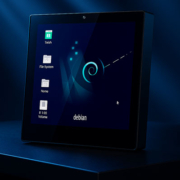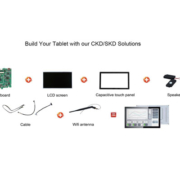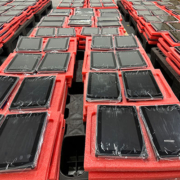What’s the Difference Between CKD and SKD, and Which One Is Better for Local Assembly?
In global electronics manufacturing, particularly in industries like smart home devices, consumer electronics, and automotive electronics, CKD (Completely Knocked Down) and SKD (Semi Knocked Down) are two common strategies for cross-border production and assembly. Choosing between CKD and SKD plays a vital role in cost control, customization flexibility, import duties, and overall supply chain efficiency.
This article explores the key differences between CKD and SKD, their respective advantages and challenges, and which approach is more suitable for local assembly operations.
What Is CKD?
CKD (Completely Knocked Down) refers to a manufacturing strategy where a product is completely disassembled into individual parts and components before shipping to the destination country. At the local assembly site, all parts are reassembled into the final product.
CKD Characteristics:
- All parts are shipped separately (e.g., PCBAs, casings, screws, wires).
- Full assembly is done locally.
- Ideal for regions with high import tariffs on finished goods.
- Higher flexibility for customization and localization.
What Is SKD?
SKD (Semi Knocked Down) is a partially assembled kit. Some modules or subsystems are pre-assembled in the origin country, while final assembly (e.g., casing, minor integration) is done locally.
SKD Characteristics:
- Core modules (e.g., motherboard + PCBA) are pre-assembled.
- Some assembly still occurs locally.
- Reduces local labor and technical demand.
- Generally faster to market than CKD.
Key Differences Between CKD and SKD
| Criteria | CKD | SKD |
|---|---|---|
| Assembly Complexity | High – requires skilled local labor | Moderate – simpler local assembly |
| Import Tariffs | Lower (components often taxed less) | Moderate (semi-finished may be taxed) |
| Cost Savings | High potential in the long term | Moderate – lower logistics/labor |
| Customization | High – product design can be tailored | Limited – tied to pre-assembled parts |
| Lead Time | Longer setup time | Faster time-to-market |
| Supply Chain Control | Full local control | Shared with overseas manufacturer |
Which Is Better for Local Assembly?
The better option depends on your business goals, regulatory environment, and local capabilities.
CKD Is Better If:
- Your country imposes high tariffs on finished products.
- You want maximum product customization or branding.
- You have access to qualified local labor and facilities.
- You aim to build local manufacturing infrastructure.
SKD Is Better If:
- You need faster time-to-market.
- Your local team lacks full technical capabilities.
- You’re testing the waters in a new regional market.
- You want to reduce logistics complexity.
Portworld’s Role in CKD/SKD/PCBA Strategy
As a leading provider of smart home control panels and embedded solutions, Portworld offers flexible CKD, SKD, and PCBA support to international partners.
- CKD Kits: Fully disassembled components, customizable for local assembly.
- SKD Kits: Pre-integrated smart panel modules (e.g., 4-inch or 5-inch), ready for fast local deployment.
- PCBA Customization: Tailored board design and firmware support, optimized for local regulations and features.
By leveraging Portworld’s engineering expertise and modular product architecture, clients can reduce costs, comply with local policies, and accelerate go-to-market timelines.





